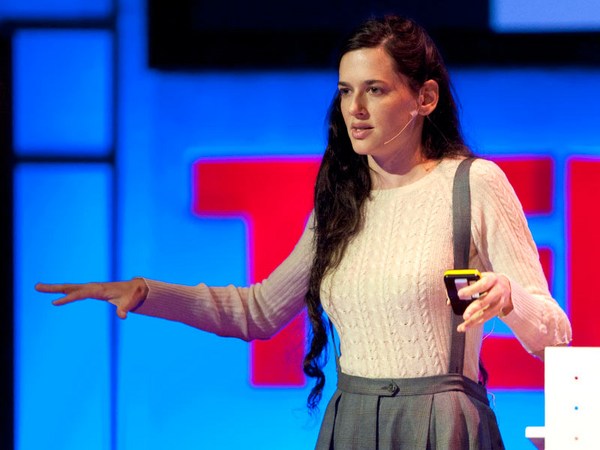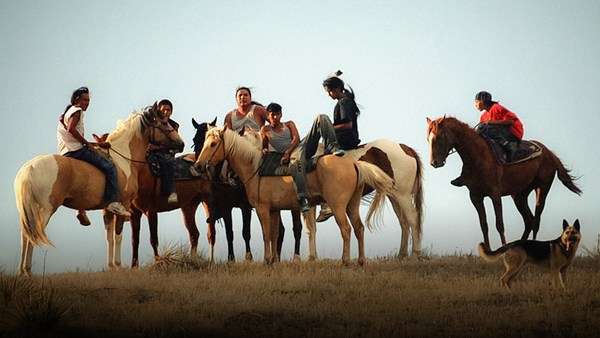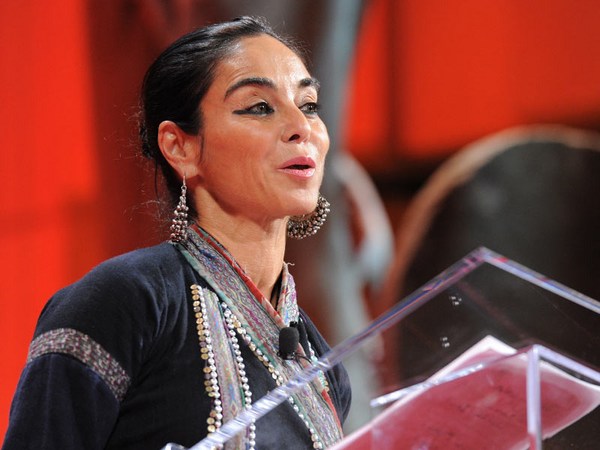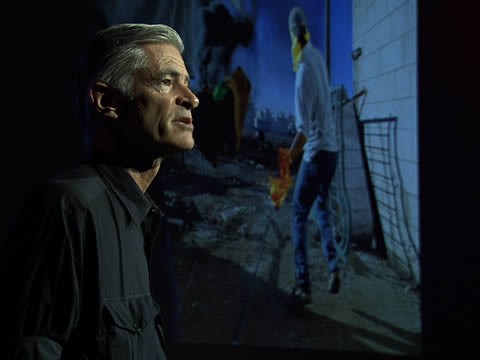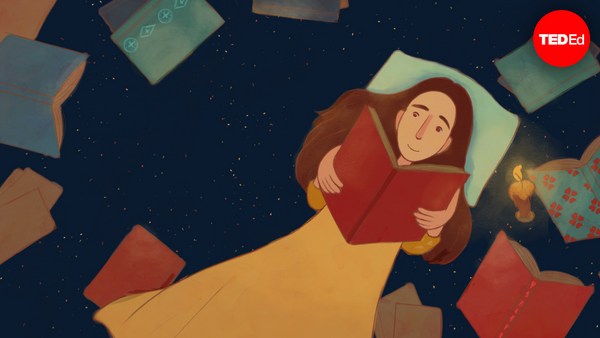This is Shivdutt Yadav, and he's from Uttar Pradesh, India. Now Shivdutt was visiting the local land registry office in Uttar Pradesh, and he discovered that official records were listing him as dead. His land was no longer registered in his name. His brothers, Chandrabhan and Phoolchand, were also listed as dead.
Family members had bribed officials to interrupt the hereditary transfer of land by having the brothers declared dead, allowing them to inherit their father's share of the ancestral farmland. Because of this, all three brothers and their families had to vacate their home. According to the Yadav family, the local court has been scheduling a case review since 2001, but a judge has never appeared.
There are several instances in Uttar Pradesh of people dying before their case is given a proper review. Shivdutt's father's death and a want for his property led to this corruption. He was laid to rest in the Ganges River, where the dead are cremated along the banks of the river or tied to heavy stones and sunk in the water.
Photographing these brothers was a disorienting exchange because on paper they don't exist, and a photograph is so often used as an evidence of life. Yet, these men remain dead. This quandary led to the title of the project, which considers in many ways that we are all the living dead and that we in some ways represent ghosts of the past and the future.
So this story is the first of 18 chapters in my new body of work titled "A Living Man Declared Dead and Other Chapters." And for this work, I traveled around the world over a four-year period researching and recording bloodlines and their related stories. I was interested in ideas surrounding fate and whether our fate is determined by blood, chance or circumstance. The subjects I documented ranged from feuding families in Brazil to victims of genocide in Bosnia to the first woman to hijack an airplane and the living dead in India. In each chapter, you can see the external forces of governance, power and territory or religion colliding with the internal forces of psychological and physical inheritance.
Each work that I make is comprised of three segments. On the left are one or more portrait panels in which I systematically order the members of a given bloodline. This is followed by a text panel, it's designed in scroll form, in which I construct the narrative at stake. And then on the right is what I refer to as a footnote panel. It's a space that's more intuitive in which I present fragments of the story, beginnings of other stories, photographic evidence. And it's meant to kind of reflect how we engage with histories or stories on the Internet, in a less linear form. So it's more disordered. And this disorder is in direct contrast to the unalterable order of a bloodline.
In my past projects I've often worked in serial form, documenting things that have the appearance of being comprehensive through a determined title and a determined presentation, but in fact, are fairly abstract. In this project I wanted to work in the opposite direction and find an absolute catalog, something that I couldn't interrupt, curate or edit by choice. This led me to blood. A bloodline is determined and ordered. But the project centers on the collision of order and disorder -- the order of blood butting up against the disorder represented in the often chaotic and violent stories that are the subjects of my chapters.
In chapter two, I photograph the descendants of Arthur Ruppin. He was sent in 1907 to Palestine by the Zionist organization to look at areas for Jewish settlement and acquire land for Jewish settlement. He oversaw land acquisition on behalf of the Palestine Land Development Company whose work led to the establishment of a Jewish state. Through my research at the Zionist Archives in Jerusalem, I wanted to look at the early paperwork of the establishment of the Jewish state. And I found these maps which you see here. And these are studies commissioned by the Zionist organization for alternative areas for Jewish settlement. In this, I was interested in the consequences of geography and imagining how the world would be different if Israel were in Uganda, which is what these maps demonstrate. These archives in Jerusalem, they maintain a card index file of the earliest immigrants and applicants for immigration to Palestine, and later Israel, from 1919 to 1965.
Chapter three: Joseph Nyamwanda Jura Ondijo treated patients outside of Kisumu, Kenya for AIDS, tuberculosis, infertility, mental illness, evil spirits. He's most often paid for his services in cash, cows or goats. But sometimes when his female patients can't afford his services, their families give the women to Jura in exchange for medical treatment. As a result of these transactions, Jura has nine wives, 32 children and 63 grandchildren. In his bloodline you see the children and grandchildren here.
Two of his wives were brought to him suffering from infertility and he cured them, three for evil spirits, one for an asthmatic condition and severe chest pain and two wives Ondijo claims he took for love, paying their families a total of 16 cows. One wife deserted him and another passed away during treatment for evil spirits. Polygamy is widely practiced in Kenya. It's common among a privileged class capable of paying numerous dowries and keeping multiple homes. Instances of prominent social and political figures in polygamous relationships has led to the perception of polygamy as a symbol of wealth, status and power.
You may notice in several of the chapters that I photographed there are empty portraits. These empty portraits represent individuals, living individuals, who couldn't be present. And the reasons for their absence are given in my text panel. They include dengue fever, imprisonment, army service, women not allowed to be photographed for religious and cultural reasons. And in this particular chapter, it's children whose mothers wouldn't allow them to travel to the photographic shoot for fear that their fathers would kidnap them during it.
Twenty-four European rabbits were brought to Australia in 1859 by a British settler for sporting purposes, for hunting. And within a hundred years, that population of 24 had exploded to half a billion. The European rabbit has no natural predators in Australia, and it competes with native wildlife and damages native plants and degrades the land. Since the 1950s, Australia has been introducing lethal diseases into the wild rabbit population to control growth. These rabbits were bred at a government facility, Biosecurity Queensland, where they bred three bloodlines of rabbits and have infected them with a lethal disease and are monitoring their progress to see if it will effectively kill them. So they're testing its virulence. During the course of this trial, all of the rabbits died, except for a few, which were euthanized.
Haigh's Chocolate, in collaboration with the Foundation for Rabbit-Free Australia, stopped all production of the Easter Bunny in chocolate and has replaced it with the Easter Bilby. Now this was done to counter the annual celebration of rabbits and presumably make the public more comfortable with the killing of rabbits and promote an animal that's native to Australia, and actually an animal that is threatened by the European rabbit.
In chapter seven, I focus on the effects of a genocidal act on one bloodline. So over a two-day period, six individuals from this bloodline were killed in the Srebrenica massacre. This is the only work in which I visually represent the dead. But I only represent those that were killed in the Srebrenica massacre, which is recorded as the largest mass murder in Europe since the Second World War. And during this massacre, 8,000 Bosnian Muslim men and boys were systematically executed.
So when you look at a detail of this work, you can see, the man on the upper-left is the father of the woman sitting next to him. Her name is Zumra. She is followed by her four children, all of whom were killed in the Srebrenica massacre. Following those four children is Zumra's younger sister who is then followed by her children who were killed as well. During the time I was in Bosnia, the mortal remains of Zumra's eldest son were exhumed from a mass grave. And I was therefore able to photograph the fully assembled remains. However, the other individuals are represented by these blue slides, which show tooth and bone samples that were matched to DNA evidence collected from family members to prove they were the identities of those individuals. They've all been given a proper burial, so what remains are these blue slides at the International Commission for Missing Persons.
These are personal effects dug up from a mass grave that are awaiting identification from family members and graffiti at the Potochari battery factory, which was where the Dutch U.N. soldiers were staying, and also the Serbian soldiers later during the times of the executions. This is video footage used at the Milosevic trial, which from top to bottom shows a Serbian scorpion unit being blessed by an Orthodox priest before rounding up the boys and men and killing them.
Chapter 15 is more of a performance piece. I solicited China's State Council Information Office in 2009 to select a multi-generational bloodline to represent China for this project. They chose a large family from Beijing for its size, and they declined to give me any further reasoning for their choice. This is one of the rare situations where I have no empty portraits. Everyone showed up. You can also see the evolution of the one-child-only policy as it travels through the bloodline.
Previously known as the Department of Foreign Propaganda, the State Council Information Office is responsible for all of China's external publicity operations. It controls all foreign media and image production outside of China from foreign media working within China. It also monitors the Internet and instructs local media on how to handle any potentially controversial issues, including Tibet, ethnic minorities, Human Rights, religion, democracy movements and terrorism. For the footnote panel in this work, this office instructed me to photograph their central television tower in Beijing. And I also photographed the gift bag they gave me when I left.
These are the descendants of Hans Frank who was Hitler's personal legal advisor and governor general of occupied Poland. Now this bloodline includes numerous empty portraits, highlighting a complex relationship to one's family history. The reasons for these absences include people who declined participation. There's also parents who participated who wouldn't let their children participate because they thought they were too young to decide for themselves. Another section of the family presented their clothing, as opposed to their physical presence, because they didn't want to be identified with the past that I was highlighting. And finally, another individual sat for me from behind and later rescinded his participation, so I had to pixelate him out so he's unrecognizable.
In the footnote panel that accompanies this work I photographed an official Adolph Hitler postage stamp and an imitation of that stamp produced by British Intelligence with Hans Frank's image on it. It was released in Poland to create friction between Frank and Hitler, so that Hitler would imagine Frank was trying to usurp his power.
Again, talking about fate, I was interested in the stories and fate of particular works of art. These paintings were taken by Hans Frank during the time of the Third Reich. And I'm interested in the impact of their absence and presence through time. They are Leonardo da Vinci's "Lady With an Ermine," Rembrandt's "Landscape With Good Samaritan" and Raphael's "Portrait of a Youth," which has never been found.
Chapter 12 highlights people being born into a battle that is not of their making, but becomes their own. So this is the Ferraz family and the Novaes family. And they are in an active blood feud. This feud has been going on since 1991 in Northeast Brazil in Pernambuco, and it involved the deaths of 20 members of the families and 40 others associated with the feud, including hired hit men, innocent bystanders and friends. Tensions between these two families date back to 1913 when there was a dispute over local political power. But it got violent in the last two decades and includes decapitation and the death of two mayors. Installed into a protective wall surrounding the suburban home of Louis Novaes, who's the head of the Novaes family, are these turret holes, which were used for shooting and looking.
Brazil's northeast state of Pernambuco is one of the nation's most violent regions. It's rooted in a principle of retributive justice, or an eye for an eye, so retaliatory killings have led to several deaths in the area. This story, like many of the stories in my chapters, reads almost as an archetypal episode, like something out of Shakespeare, that's happening now and will happen again in the future. I'm interested in these ideas of repetition. So after I returned home, I received word that one member of the family had been shot 30 times in the face.
Chapter 17 is an exploration of the absence of a bloodline and the absence of a history. Children at this Ukrainian orphanage are between the ages of six and 16. This piece is ordered by age because it can't be ordered by blood. In a 12-month period when I was at the orphanage, only one child had been adopted. Children have to leave the orphanage at age 16, despite the fact that there's often nowhere for them to go. It's commonly reported in Ukraine that children, when leaving the orphanage are targeted for human trafficking, child pornography and prostitution. Many have to turn to criminal activity for their survival, and high rates of suicide are recorded.
This is a boys' bedroom. There's an insufficient supply of beds at the orphanage and not enough warm clothing. Children bathe infrequently because the hot water isn't turned on until October. This is a girls' bedroom. And the director listed the orphanage's most urgent needs as an industrial size washing machine and dryer, four vacuum cleaners, two computers, a video projector, a copy machine, winter shoes and a dentist's drill. This photograph, which I took at the orphanage of one of the classrooms, shows a sign which I had translated when I got home. And it reads: "Those who do not know their past are not worthy of their future."
There are many more chapters in this project. This is just an abridged rendering of over a thousand images. And this mass pile of images and stories forms an archive. And within this accumulation of images and texts, I'm struggling to find patterns and imagine that the narratives that surround the lives we lead are just as coded as blood itself. But archives exist because there's something that can't necessarily be articulated. Something is said in the gaps between all the information that's collected. And there's this relentless persistence of birth and death and an unending collection of stories in between. It's almost machine-like the way people are born and people die, and the stories keep coming and coming. And in this, I'm considering, is this actual accumulation leading to some sort of evolution, or are we on repeat over and over again?
Thank you.
(Applause)
